1. This another case where I show three rules made at different
times - in this case separated by over 20 years. The differences are relatively minor;
different labelling of the scales, a different arrangement of the window for the log-log
scales and additional hair lines on the cursor.
2. This rule is a Darmstadt - named after the technical college in that German city.
Interestingly the city of Mannheim is not far away and whilst this is also the name of one
of the other standard slide rule scale layouts there is no (direct) connection; Mannheim
was a French artillery officer.
3. The log-log scales are on the rear of the slide and accessed via a plastic
"window" on the back of the rule. This makes good sense, as whilst the log-log
scales are used in conjunction with the C and D scales for raising numbers to a
non-integer power, the result cannot be carried directly forward into other
calculation. For example to calculate 2.5 * (6.1)0.75 you would have to
calculate the value of (6.1)0.75 first, note down the answer and then multiply
that by 2.5. Perhaps this explains why this layout was so successful over so many years.
4. The log scale and the trig scales are on the top and bottom edges of the ruler
respectively and are accessed by extensions to the cursor. Although the cursor
construction changed with different models, the same principle continued to be used.
5. The cursor construction in the 1945 model is perhaps the most unusual as it used metal
clips to hold together the three pieces of glass.
6. The labelling of the scales also evolved. The makers name does not appear of the face
of the 1945 model. It also seems strange that the D and P scales should be the only scales
with labels on the earlier versions.
7. The stock and the slide are of wood and have metal inserts. The later model has added
plastic at the back of the rule. The 1945 model I have, in excellent condition overall, is
slightly bowed as if the plastic has shrunk more than the wood. It could be that the extra
plastic was added to maintain a better balance and prevent this. Though that said the 1952
model has the same construction as the 1945 model and does not show any bowing.


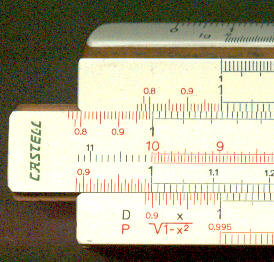
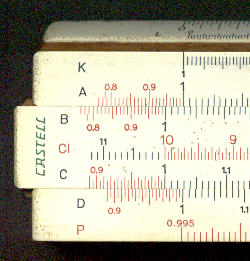
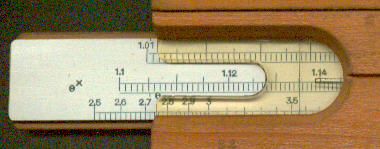
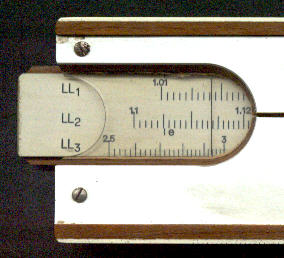
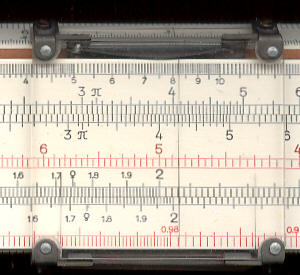
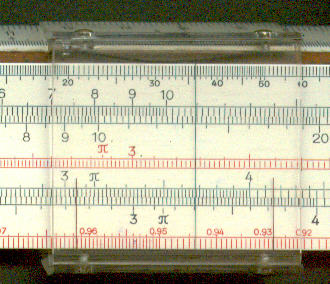
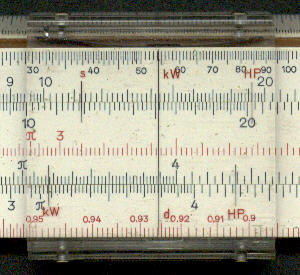

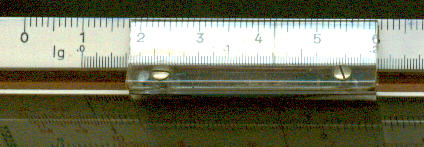
Q,C,D
On later models, plastic. Screwed on plastic plates at top and bottom enable upper and lower edge of rule to be used.
From the right to the left hairline 736 (French HP to kW)
On the later model only:
HP conversion for use with A scale.
p/4 for the A scale.